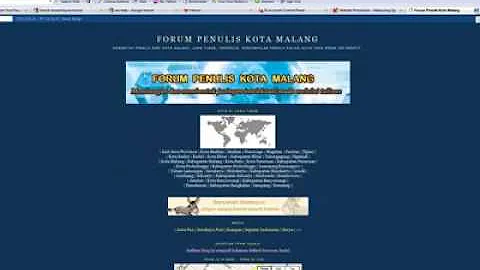Mastering On-Page SEO: Boost Your Website's Visibility
Table of Contents
- Introduction to On-Page SEO
- Importance of Keyword Usage
- Optimizing Title Tags and Meta Descriptions
- Incorporating Keywords in URL Slugs
- Including Keywords in Headings and Content
- Optimizing Images with Alt Text and File Names
- Addressing Search Intent
- Analyzing Competitor Pages
- Using Semantically Related Words
- Tips for Writing SEO-Friendly Content
Introduction to On-Page SEO
When it comes to SEO, on-page optimization plays a crucial role in determining the visibility and ranking of web pages on search engine results pages (SERPs). On-page SEO involves optimizing web pages to make them relevant and useful for target keywords. In this article, we will explore the key aspects of on-page SEO and how to implement them effectively.
Importance of Keyword Usage
One of the fundamental factors in on-page SEO is keyword usage. Including target keywords in the content helps search engines and users understand the purpose and relevance of the page. By strategically placing keywords, web pages have a higher chance of ranking well on search engines. However, it's crucial to use keywords naturally and avoid over-optimization, as it can make the content appear spammy and untrustworthy.
Pros
- Improved visibility on search engine results pages (SERPs)
- Higher chances of ranking for target keywords
- Enhanced understanding of page content by search engines and users
Cons
- Over-optimization can appear spammy and harm rankings
- Difficulty in maintaining a balance between keyword usage and natural content flow
Optimizing Title Tags and Meta Descriptions
Title tags and meta descriptions are essential elements for on-page SEO. The title tag, an HTML element, helps improve rankings on search engines and attracts users' attention on the SERP. It's crucial to include the primary target keyword in the title tag naturally while keeping it concise (under 60 characters). Additionally, meta descriptions provide a brief overview of the page's content. While their impact on rankings has decreased, it's still beneficial to include the primary target keyword and ensure they are under 160 characters.
Pros
- Improved rankings and click-through rates on SERPs
- Increased visibility and relevance of the page to users
Cons
- Decreased importance of meta descriptions in rankings
- Limited character constraints for both title tags and meta descriptions
Incorporating Keywords in URL Slugs
URL slugs, the last part of a web page's URL, offer another opportunity to include target keywords. Using the primary target keyword in the URL slug, separated by hyphens, helps search engines understand the page's content. It's best to keep URL slugs descriptive, concise, and avoid including unnecessary elements such as numbers or dates.
Pros
- Improved understanding of page content by search engines
- Potential visibility in search engine results based on URL inclusion
Cons
- Difficulty in striking a balance between descriptive and concise URL slugs
- Risk of creating long and complex URL slugs
Including Keywords in Headings and Content
Keywords should also be incorporated within headings and the main content of web pages. Starting with the headline, which is often marked with an H1 tag, keywords should be used naturally to provide a clear indication of the content's focus. Subheadings (H2, H3, etc.) can further reinforce keyword relevance and improve the overall structure and readability of the page. Throughout the body text, keywords should be included appropriately, avoiding overuse and maintaining a natural flow.
Pros
- Enhanced keyword relevance and visibility within page content
- Improved readability and structure with the use of headings
Cons
- Challenges in maintaining a balance between keyword usage and content flow
- Risk of overuse leading to a negative impact on rankings
Optimizing Images with Alt Text and File Names
Images on web pages present an opportunity to optimize for keywords through alt text and file names. Alt text is a short descriptive piece of text that helps search engines understand the image's content. Including the primary target keyword in alt text and file names can enhance keyword relevance and potentially generate traffic from image searches. It's important to ensure alt text and file names are descriptive and concise to provide meaningful information about the image.
Pros
- Improved understanding of images by search engines
- Potential visibility in image search results
Cons
- Challenging to strike a balance between descriptive and concise alt text and file names
- Risk of over-optimization and keyword stuffing
Addressing Search Intent
Search intent refers to the underlying needs or questions that users have when performing a search. To rank well for a keyword, it's essential to satisfy the search intent and provide valuable content. Analyzing the top-ranking pages for the target keyword can provide insights into the type of content and format needed. Understanding search intent helps in determining the appropriate page type (e.g., blog post, product page) and provides guidance on the topics to cover and the level of detail required.
Pros
- Improved relevance and user satisfaction
- Potential to rank higher by aligning content with search intent
Cons
- Difficulty in determining search intent accurately
- Requirement for in-depth research and analysis of competitor pages
Analyzing Competitor Pages
Analyzing competitor pages that rank well for the target keyword offers valuable insights and guidance. By examining their content structure, topics covered, and level of detail, it becomes easier to identify content gaps and areas for improvement. Tools like SEMrush's SEO Content Template can assist in identifying semantically related words and common phrases used in the top-ranking pages. Leveraging competitor analysis enables the creation of more comprehensive and valuable content.
Pros
- Identification of content gaps and improvement opportunities
- Enhanced understanding of relevant topics and related keywords
Cons
- Time-consuming analysis process
- Potential challenges in differentiating from competitor content
Using Semantically Related Words
Incorporating semantically related words and phrases in content helps improve topic coverage, user experience, and keyword relevance. By addressing related topics and exploring different aspects in-depth, the content becomes more comprehensive and valuable to users. Semrush's SEO Content Template and related keyword analysis provide insights into the commonly used phrases (semantically related words) in top-ranking pages, guiding content creation efforts.
Pros
- Enhanced topic coverage and content comprehensiveness
- Improved user experience and perceived value
Cons
- Risk of content becoming too extensive and overwhelming for users
- Difficulty in naturally incorporating semantically related words
Tips for Writing SEO-Friendly Content
When writing content for on-page SEO, it's essential to focus on readability and user experience. Skimmable text with short paragraphs, bullet points, and descriptive subheadings improves content flow and readability. Additionally, using images to break up the text and enhance visual appeal improves user engagement. Tools like SEMrush's SEO Writing Assistant can provide real-time feedback and suggestions for improving content quality.
Pros
- Improved readability and user engagement
- Enhanced content quality and value perception
Cons
- Challenges in striking a balance between descriptive and concise content
- Risk of overlooking content optimization due to the focus on readability
In conclusion, effective on-page SEO involves strategic keyword usage, meeting search intent, and creating high-quality, valuable content. By optimizing title tags, meta descriptions, headings, content, and images while focusing on readability and search intent, web pages have a higher chance of ranking well and attracting organic traffic.
Highlights
- On-page SEO plays a crucial role in web page visibility and ranking on search engines.
- Keyword usage is essential for improving ranking and relevance.
- Optimizing title tags and meta descriptions attracts users and improves click-through rates.
- Incorporating keywords in URL slugs improves search engine understanding.
- Including keywords in headings and content enhances relevance and readability.
- Optimization of images through alt text and file names improves keyword visibility.
- Addressing search intent ensures content alignment with user needs.
- Analyzing competitor pages helps identify improvement opportunities.
- Semantically related words enhance content comprehensiveness.
- Writing SEO-friendly content focuses on readability and user experience.
FAQ
Q: How many target keywords should be used on a web page?
A: It's essential to include target keywords naturally but avoid over-optimization. The exact number of target keywords varies depending on the page's length and content. Instead of focusing on a specific number, prioritize creating valuable content that serves the users' needs.
Q: Can I overuse target keywords in my content?
A: Overusing target keywords can harm your rankings and make your content appear spammy. It's crucial to maintain a balance between keyword usage and natural content flow.
Q: Is it necessary to include target keywords in alt text and file names for images?
A: Including target keywords in alt text and file names can improve keyword relevance and potentially generate traffic from image searches. However, it's important to ensure that the alt text and file names are descriptive and concise.
Q: How important is readability in SEO content?
A: Readability is a crucial aspect of SEO content. Skimmable text with short paragraphs, bullet points, and descriptive subheadings enhances content flow and improves user engagement. Writing SEO-friendly content should prioritize user experience and readability.
Q: How does addressing search intent impact SEO rankings?
A: Addressing search intent ensures that your content aligns with user needs, increasing the chances of user satisfaction and engagement. Google values content that fulfills search intent, which can lead to higher rankings on search engine results pages (SERPs).







